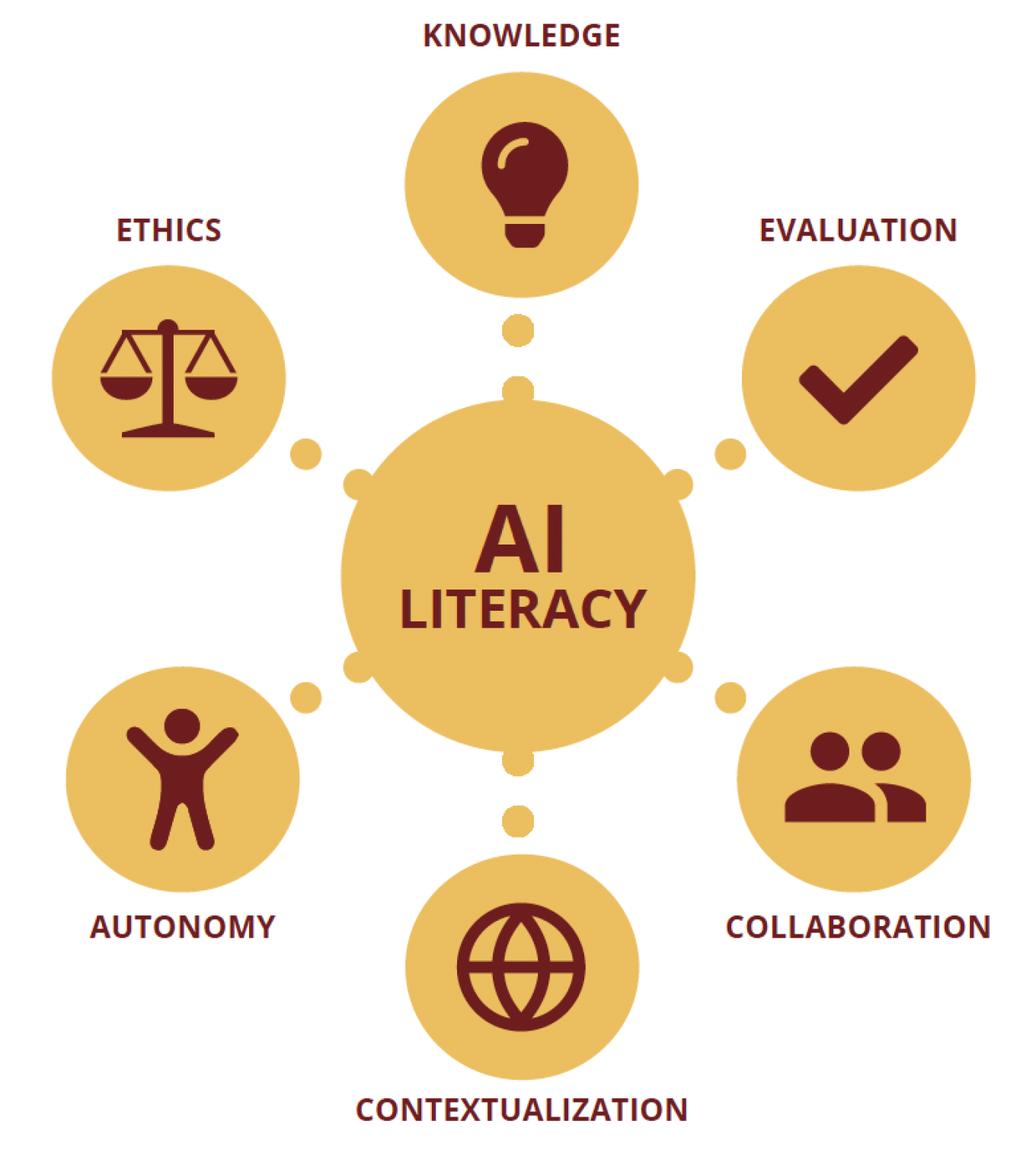ED-AI Literacy Framework
GenAI in the Classroom: A Science of Learning Perspective
Artificial intelligence (AI) is no longer a futuristic concept—it's transforming our learning environments in real-time. With AI increasingly becoming a part of our everyday lives, learning to work with this technology wisely is a critical new literacy for both students and educators. Before we dive in, let's get clear on some basic terms:
“intelligent” behavior demonstrated by technology, usually in the form of a machine or computer system; examples include GPS guidance, autonomous cars, bank fraud detection
A specific type of AI that involves the creation of new content that did not previously exist; examples include deep learning models that can generate text, videos, images, etc. GenAI presents the latest and perhaps biggest paradigm shift in terms of both practical uses of AI, as well as the types of literacies that will be important for students to navigate an AI-informed world.
A large language model (LLM) is a sophisticated form of AI that is designed to process and generate new text. These models “learn” to produce new text after being trained on massive amounts of data (e.g., billions of articles, books, chats from the internet). LLMs, such as ChatGPT can then do things like summarize texts, write articles, generate stories, or compose emails. Right now, they are the most popular forms of generative AI.
A constellation of skills that include a deep understanding of how AI systems function, evaluating their implications with a critical eye, and fostering collaborative relationships between individuals and AI.
ED-AI Literacy Framework
In response to the changing environment, we developed the ED-AI Lit Framework:
- KNOWLEDGE: Understanding how AI works and its applications is fundamental.
- EVALUATION: Critically judging AI technologies and information sources enables students to discern credible information from biased or unreliable sources.
- COLLABORATION: Effectively communicating and collaborating with AI systems and peers prepares students for collaborative work environments.
- CONTEXTUALIZATION: Applying AI knowledge in real-world settings across disciplines helps students understand its practical applications.
- AUTONOMY: Making informed decisions and taking responsible actions when interacting with AI empowers students to navigate AI-driven environments independently.
- ETHICS: Recognizing and addressing ethical issues related to AI technologies is critical and ensures the responsible use and development of AI.

Should I Trust What GenAI Generates?
Here we provide example questions you might ask about how each component in the framework relates to issues of trust.
- How would students gauge trust in GenAI without knowing how the technology works?
- Which GenAI tools should be trusted with particular tasks? In the flow of everyday life with GenAI, how can we even learn to pause and gauge trust?
- How can we balance the potential ease and automaticity of GenAI tools with caution and skill in interpreting the quality of what they generate?
- How does trusting GenAI differ across settings, like political ads, science meta reviews, artistic depictions?
- Where do students find themselves weighing the trustworthiness of GenAI content in their everyday lives?
- Whose work fuels AI without due credit? When do conversations about gauging trust eclipse other important ethical issues?
Curious to learn more about the ED-AI Literacy Framework and how to apply it? You can download a short summary document or check out this recent article by LIL faculty member, Laura Allen, and our co-director, Pani Kendeou: ED-AI Lit: An Interdisciplinary Framework for AI Literacy in Education